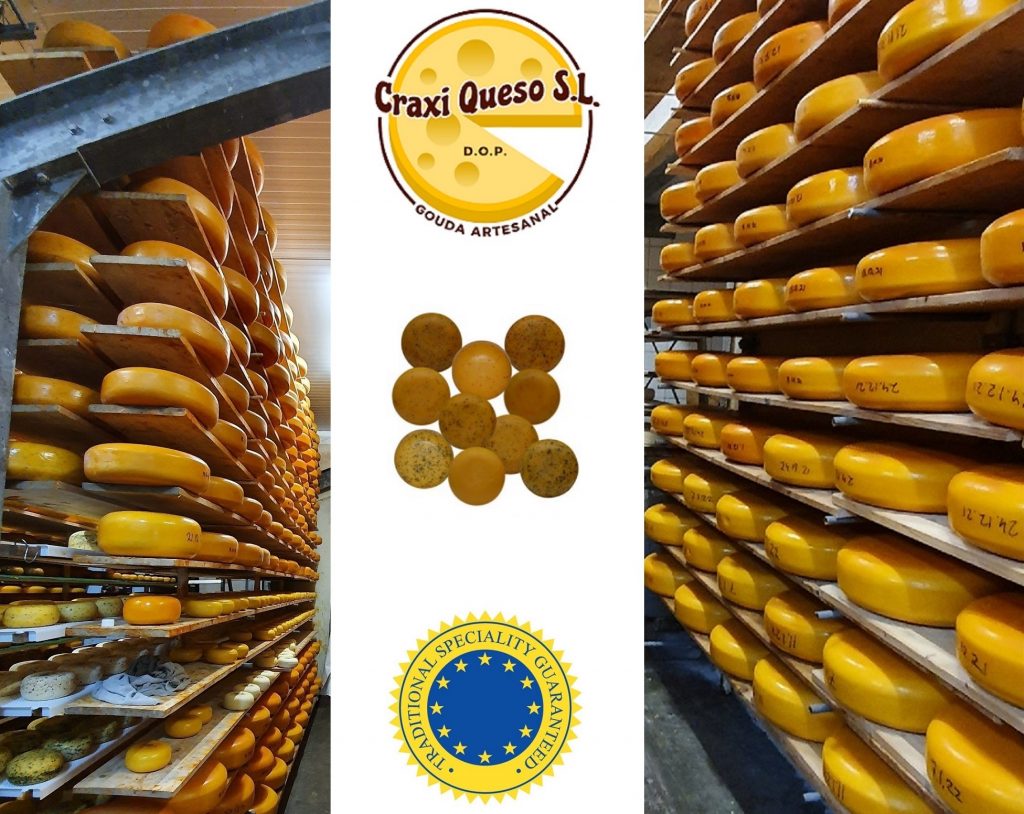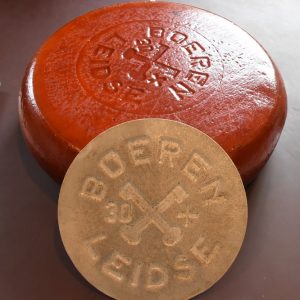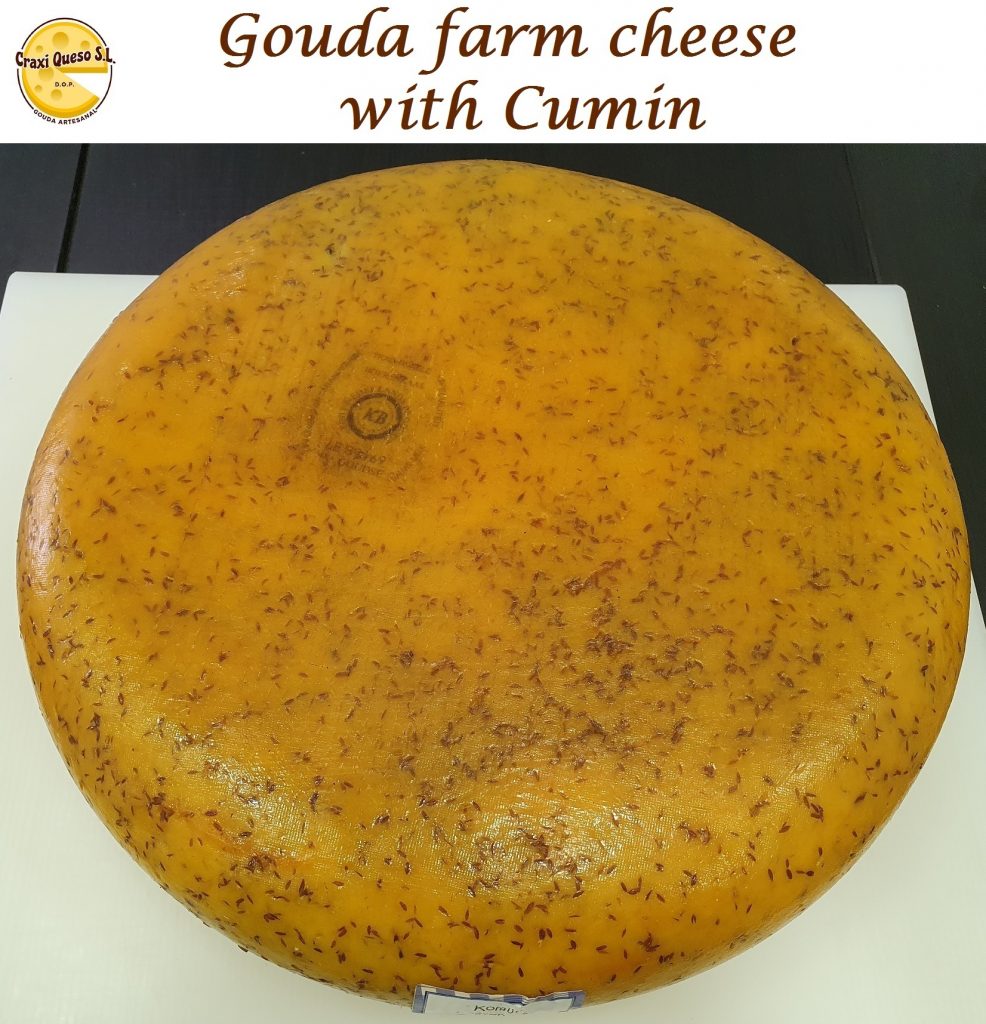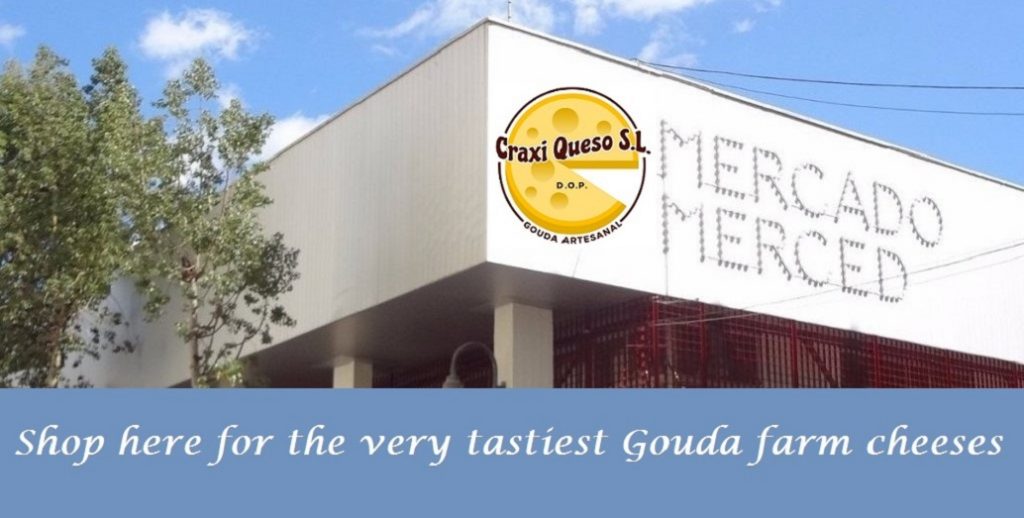Craxi Cumin Gouda farmer’s cheese.

Raw milk cumin cheese made by cheese farmers.
Cheesemakers in the Netherlands produce various types of cumin cheese.
- Factory-made cumin cheese (pasteurised milk)
- Gouda farmer’s cheese with cumin (raw milk cheese)
- Leyden cheese (raw milk cheese)
As you will understand from us we leave out factory cheese! Although we do not make Leyden cheese ‘only’ Gouda farmer’s cheese (Goudse Boerenkaas) with cumin we start with Leyden cheese (Leidse Kaas) because this cheese was the most important cheese in the Netherlands for centuries.
We can safely assume that the origins of the use of cumin in cheese began in the immediate vicinity of the city of Leiden in the Netherlands because, according to the annals, this cheese was first spotted in the Leiden market in the year 1303.
Why did this cheese become popular?
During that time, people regarded butter as the most significant and valuable dairy product. They considered Leiden cream butter, produced from raw milk, as the world’s tastiest. Even back then, they distinguished the butter by applying the Leiden keys as a guarantee of its origin and quality.
The high demand for this high-quality butter created a problem, namely a residual product ‘skimmed milk’ for which there was no really good use except mixing it with cattle feed. Initially, on some farms, cheese was made with skimmed milk but this flat-tasting low-fat (30+) cheese could not compete with full-fat (48+) Gouda farmer’s cheese.
When did this cheese with cumin seeds become popular?
Leyden cheese (Leidse Kaas) flourished during the time of the United East India Company (VOC, 1602-1800). The VOC’s spice trade brought many spices to the Netherlands including large quantities of cumin.
As cumin was now widely available, farmers started using cumin to enhance the taste of the cheese, which proved to be a successful combination. This cheese became successful not only for its taste but certainly also for its long shelf life due to its low-fat content (30+) which was important in a time without refrigeration and long sea voyages.
During the VOC period, Leyden cheese was a source of protein for the crew and its low-fat content made it long-lasting, did not sweat or melt in tropical temperatures. Because of these characteristics of the cheese, the VOC ordered some 3 million kilos annually.
In the heyday of the production of Leidse Kaas there were about 700 farmers making Leidse Kaas in the Netherlands in 2022 there are still 12.
How to recognise real traditional Leyden cheese & Gouda farmer’s cheese with cumin?
To distinguish the Gouda cheese, known for its yellow color, from Leyden cheese, the latter was intentionally given a red/brown hue. Additionally, Leyden cheese stands out with its one straight shoulder and one round shoulder, as Gouda cheese is exclusively permitted to have two round shoulders.
As a buyer, you can identify the unique Leyden cheese by the presence of a special logo with keys printed on the rind. This practice has been in place since the 17th century. On the other hand, you can recognize Gouda farmer’s cheese by the barrel-shaped cheese seal.
- The European Union granted Leyden cheese the status of a protected regional product in 1997.
- In 2007, Gouda farmer’s cheese received the designation by the European Union as a guaranteed traditional speciality.


Craxi Gouda farmer’s cheese with cumin.
Our cheese shop in Málaga offers the following varieties of raw milk Gouda with cumin, or you can order them from our webshop.
- Mini Gouda wheel with cumin, wheel weight per piece 500 grams.
- Baby Gouda wheel with cumin, wheel weight per piece 1 kilo.
- Whole 12 kg Gouda wheel with cumin, a half wheel (±6 Kg), or a quarter wheel (±3 Kg).
If you have any further questions please contact us via the contact form.
In our cheese shop in Malaga, our range consists of our own cheeses but do you live in Spain and really miss the taste of Leidse Kaas? Feel free to contact us.
Location Craxi Gouda cheese shop. Address, Mercado de la Merced, Stall 14, Calle Merced, 4, 29012 Málaga, Spain.
